Dear brands: women appreciate your support
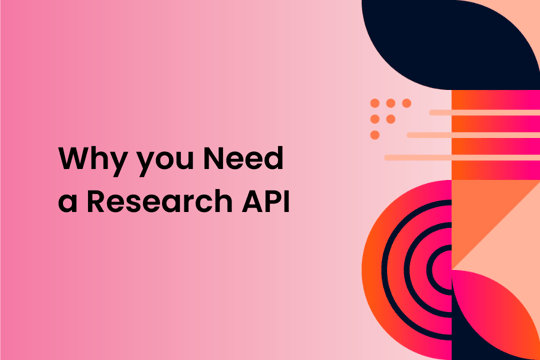
International Women’s Day celebrates the impact of women across society – in the workforce, culturally, politically and economically. Many people think it is a new holiday, but it actually dates back to February 1909 when it was originally known as “National Women’s Day.” It was renamed to International Women’s Day in 1911, and in 1975 the United Nations began celebrating the holiday the year it dubbed “International Women’s Year.”
This year, DISQO decided to mark the day by tapping into our customer experience platform to gain a better understanding of the significance of the day to women. Between March 1-6, 2022, DISQO used our platform to gauge how women felt about the holiday. We asked 3,839 adult women in the United States about their awareness of the day, how they marked it, and the impact that brands’ sharing in the celebrations had on their perception of these companies.
As socially-conscious brands increasingly engage consumers with content celebrating the day, we wanted to know the impact of these initiatives with their target audiences. From companies like Target, highlighting women-owned products in their stores to brands such as Vans developing special collections that generate proceeds for women’s charities, marketers are increasingly taking International Women’s Day seriously.
The halo effect of IWD communications
We found that there is an upside to featuring IWD in advertising. Over half (51%) of the women we asked, who said they were aware of the holiday, also said they feel positively toward brands that recognize the day in their ads. Importantly, 45% of women who were aware of IWD said that they felt neutral about brands’ communications that feature the day, and only 4% said that such communications made them feel less positive. For brands, there is very little potential for downside in participating in IWD communications.
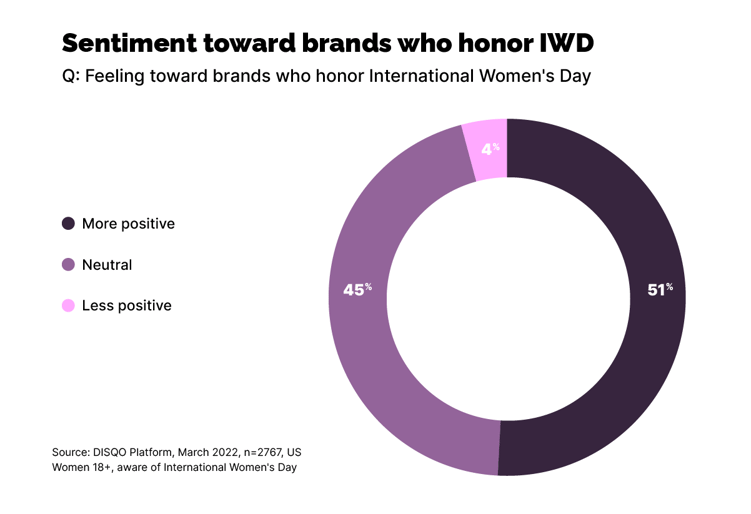
US women between the ages of 25 and 44 were the most likely (61%) to report more positive feelings about brands celebrating the holiday, whereas women in older age groups were less likely to say the same: 55-64 years-old (39%); 65 and older (30%).
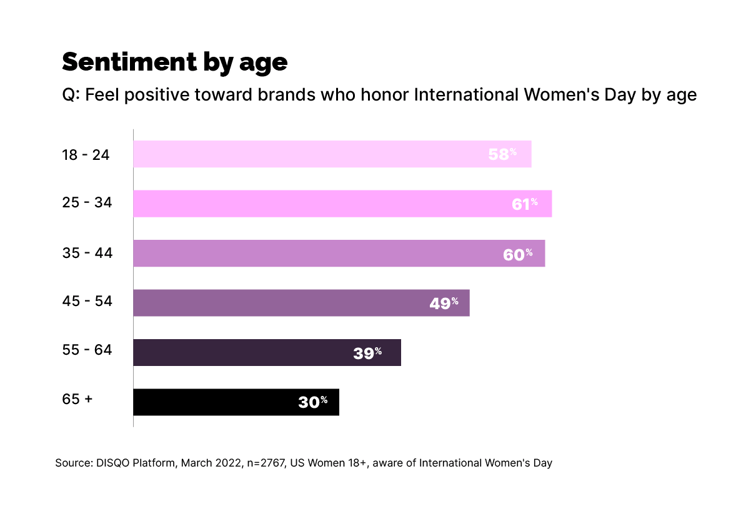
Perhaps it is surprising given IWD’s rich history dating back more than 100 years, but women’s awareness of IWD has room for growth. Twenty-eight percent of women said they were not aware of it and therefore would not be celebrating it. More than 24% said they were aware, but would not be celebrating. Encouragingly though, more than 47% of women said they were aware and would be celebrating the event.
Brands developing IWD content have the opportunity to realize the aforementioned halo effect while also playing an important role in increasing awareness of the holiday.
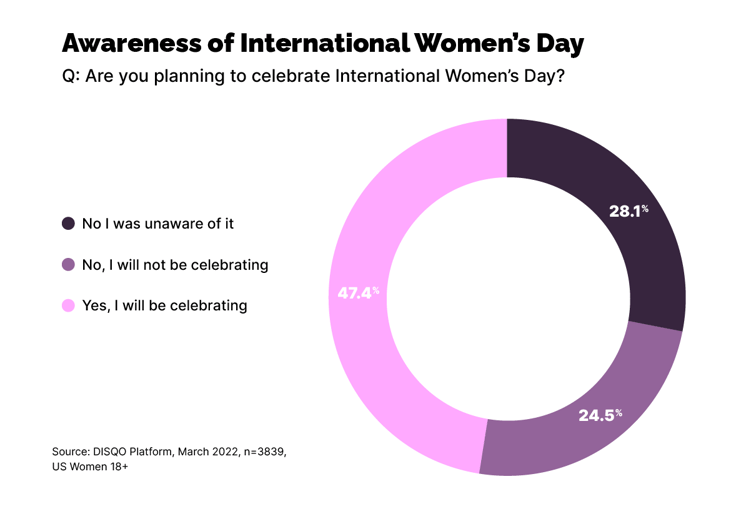
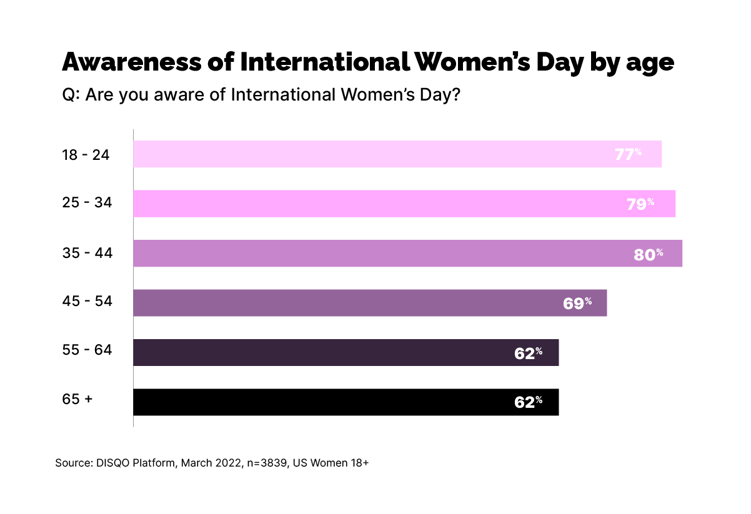
IWD presents an opportunity for brands to contribute socially
This year’s IWD theme, #BreaktheBias, offers a number of ways that people can observe the holiday, from speaking out on social media, to participating in events at work, talking about how to stop biases with family members, and/or participating in local and regional events. Of the nearly half of our respondents that planned to celebrate IWD, nearly half (46,6%) planned to do so at home and 28.7% planned to observe the day at work. The remainder said they would recognize the day with online communities or outside their home.
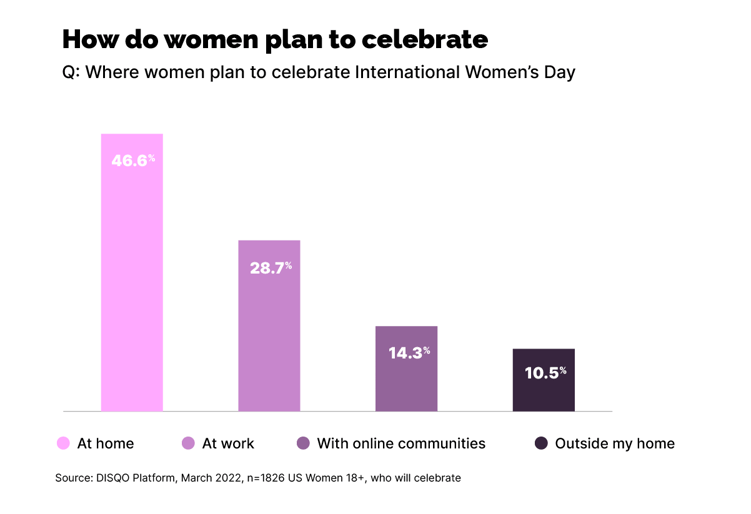
In an earlier DISQO study, Brand Purpose & Brand Activism , we found that 65% of consumers felt that brands should get involved in societal issues. When taken together, these insights show that brands have an opportunity to forge stronger bonds with their customers by aligning their brand purpose to their customers’ values while also lending the weight of their brands and marketing efforts to pivotal moments like International Women’s Day.

Subscribe now!
Get our new reports, case studies, podcasts, articles and events
